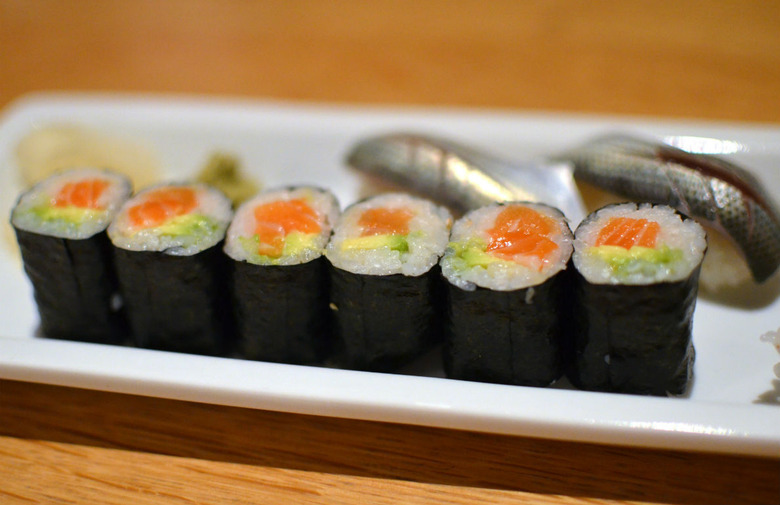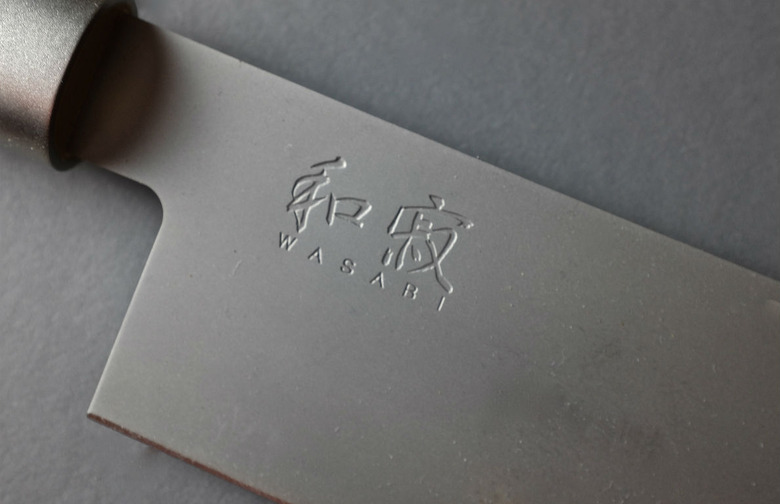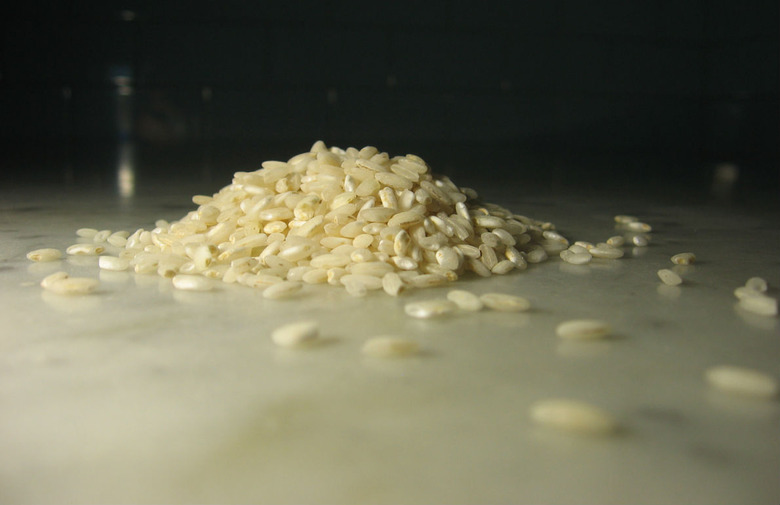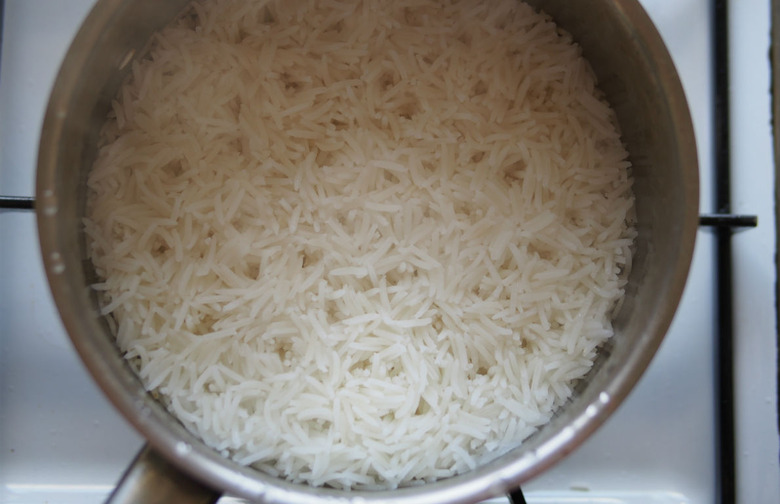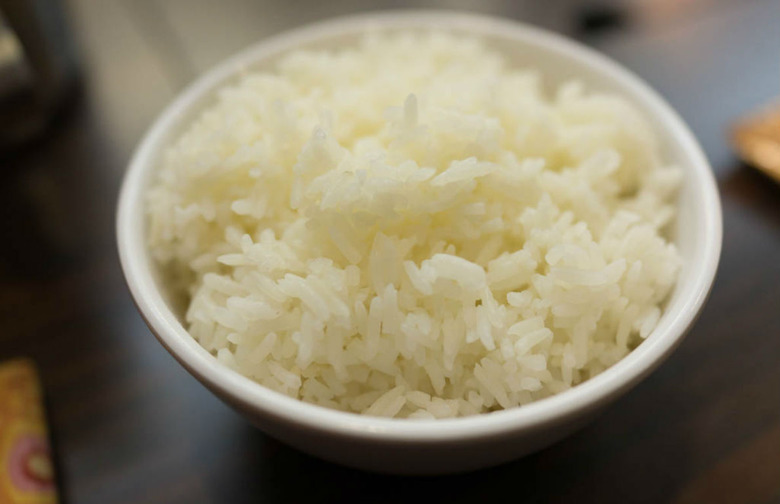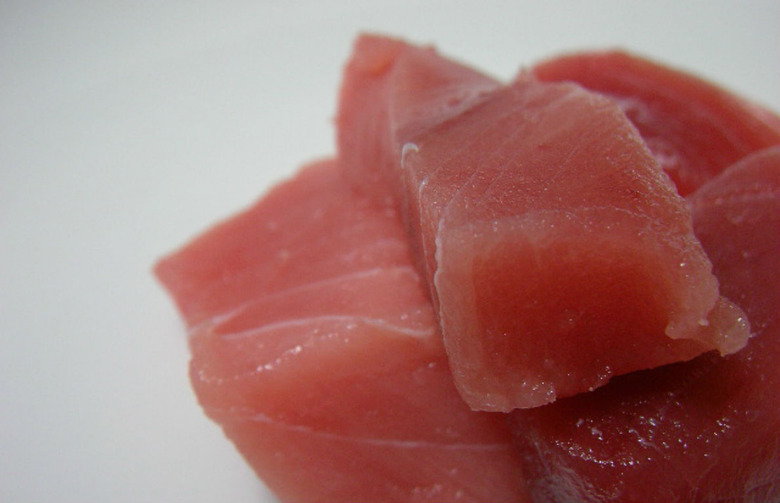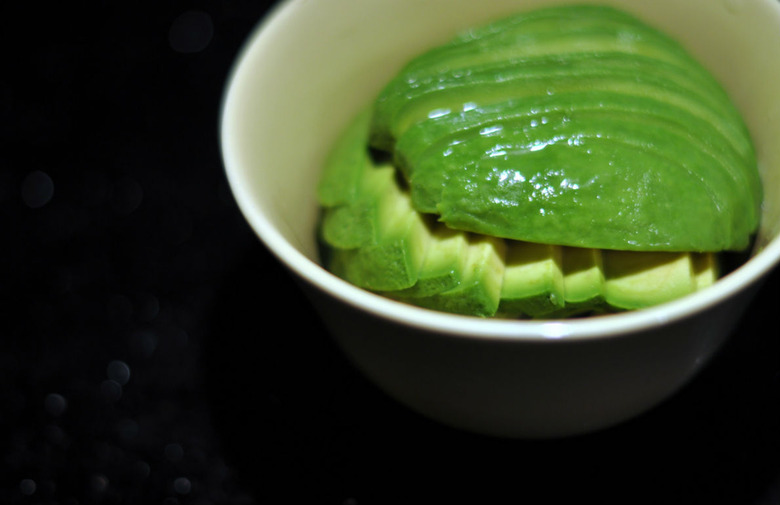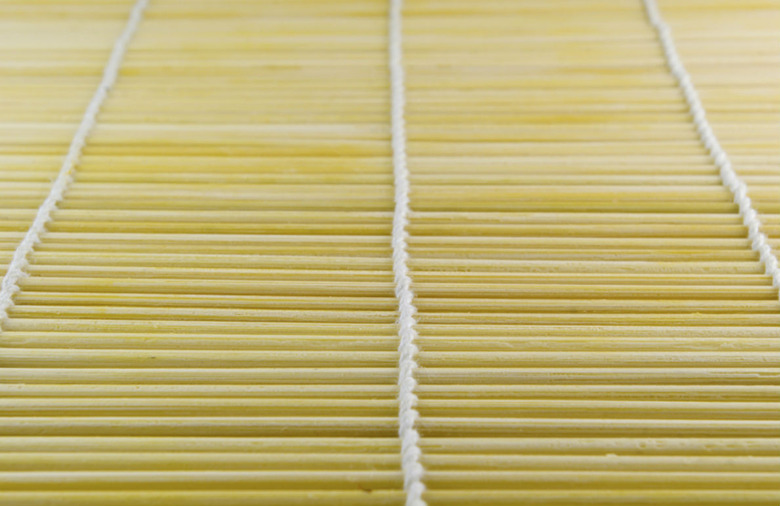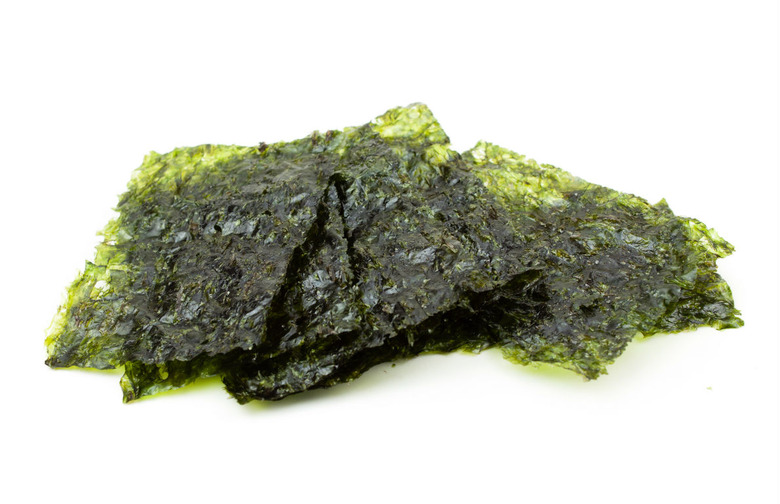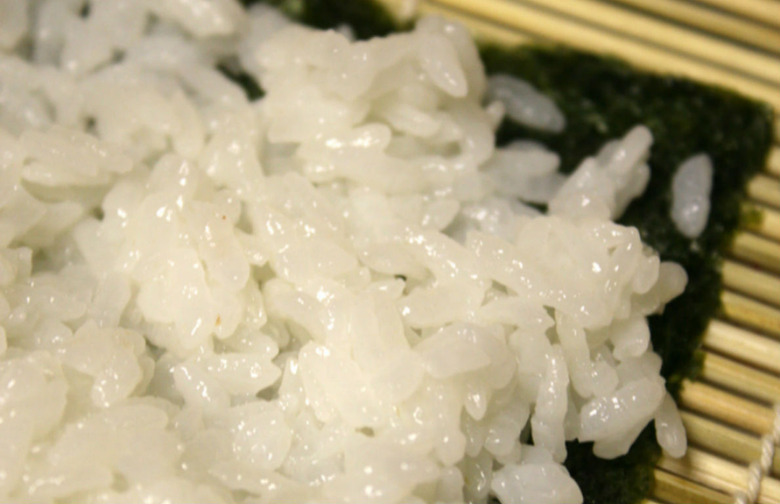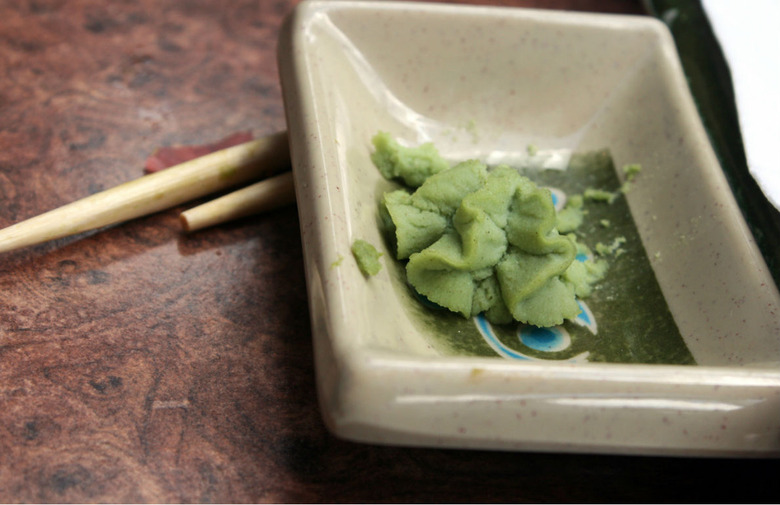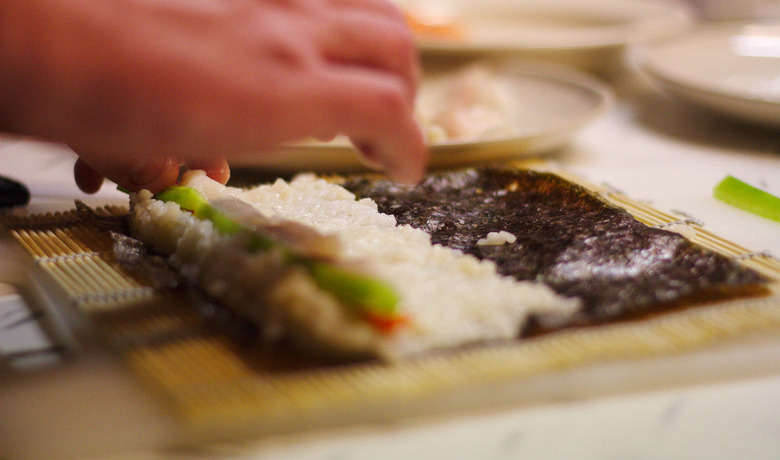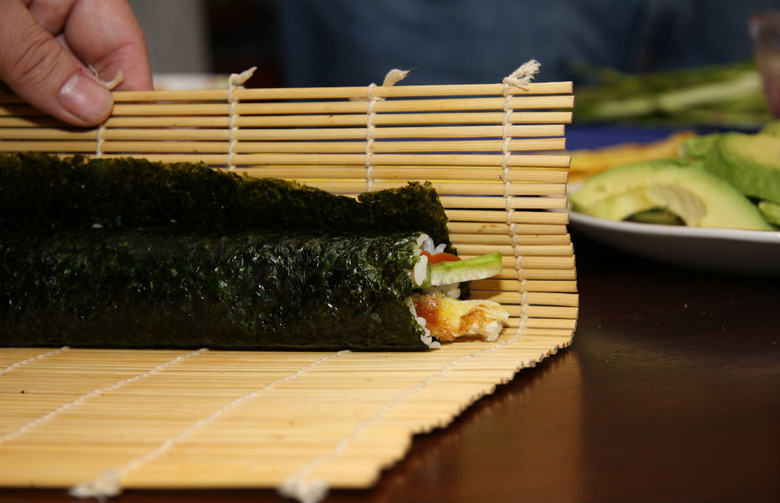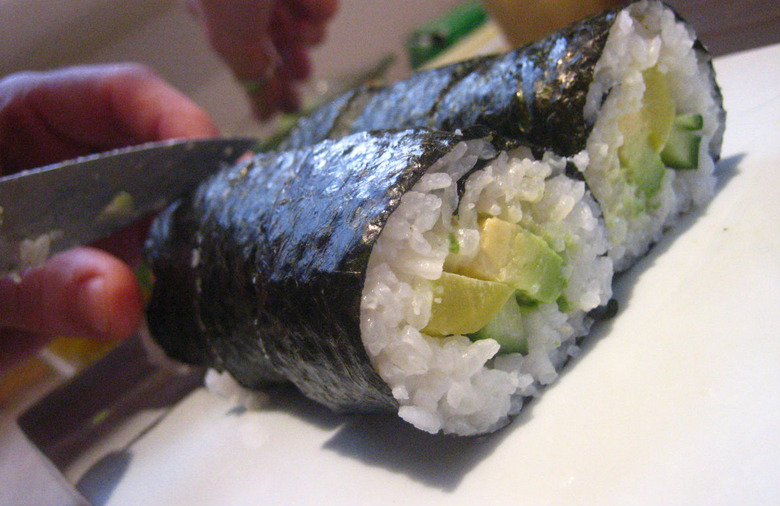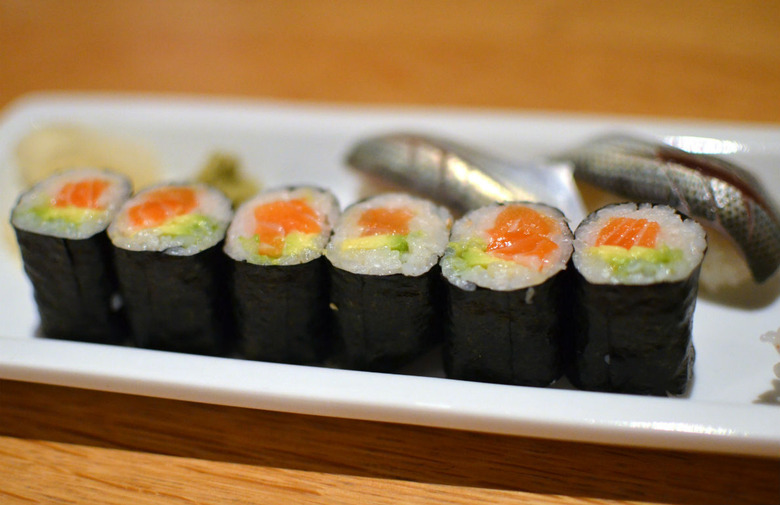Make Your Own Sushi For Your Brunch Or Dinner Party? Yes! Here's How
Making sushi at home may sound like an impossible task that's not even worth thinking about attempting. Surely there's a reason people always order sushi as a take-out option on a Friday night, rather than attempting to make it at home. Although it may take a lot practice to get those rolls looking as symmetrically perfect as they do from the local Japanese restaurant, making sushi at home is a satisfying and fun cooking project, which takes surprisingly little time, and yields amazingly delicious results.
Gather Your Tools
Before you start cooking your rice and laying out your sheets of seaweed, make sure you have everything you need: a saucepan, sieve, baking tray, bamboo mat, plastic wrap, and a very sharp chef's knife.
Prepare the Rice
To make 50 pieces of sushi, you're going to need two cups of sushi rice. If you want to increase or decrease the amount of sushi you make, just change the quantities accordingly. Place the rice in a large bowl, cover with water, and massage the rice with your hands. When the water is really cloudy, drain the rice and repeat. You'll want to do this two or three times, until the water you are draining off the rice is nearly completely clear. Now set the rice aside in a sieve and let it drain for 20-30 minutes.
Cook the Rice
If you have a rice cooker, use it. If you don't, then put the rice in a pan, cover it with two and a quarter cups of water, and let it soak for 30-60 minutes. Then, with the lid on the pan, bring the rice and water to a boil. Once boiling, turn the heat down to low, and cook for 12 minutes. Keeping the lid on, remove the rice from the heat and let it steam in its own heat for 15 minutes. Don't be tempted to take the lid off and peek inside: If you let too much steam out, the rice will not be well cooked.
Cool the Rice
Prepare the Fish
Your sushi-grade fish should be treated with love and care — it's a precious ingredient. Depending on what fish you bought, it'll need preparing in different ways. We love using mackerel filets, marinated in rice vinegar for 45 minutes before being patted dry and sliced into thin strips. You can treat most fish this way, or you can skip the marinade. To cut the fish, slice it into pieces one centimeter wide, and as long as a sheet of nori seaweed.
Prepare the Vegetables
If you're using avocado, slice it lengthways into thin pieces. For cucumber, deseed it, then slice it as thinly as possible, leaving some of the skin on.
Set Up the Bamboo Mat
Set your bamboo mat up on a flat surface, and cover it with a sheet of plastic wrap to stop anything sticking to the mat's grooves.
Nori Seaweed Set-Up
Crisp the nori seaweed by hovering it over a gas hob, or any warm surface or flame, until it ceases to be quite so soft and flexible. Lay the seaweed on the bamboo mat, with the shiny side down.
Spread Rice on Seaweed
Place a small bowl of water with a few drops of rice vinegar in, near where you're working, and move your cooled rice over to your work surface. Wet your hands and scoop up roughly half a cup of sushi rice. Form the rice into a loosely packed cylinder and place it on the seaweed. Using your fingers gradually press and push the rice until it covers the whole nori sheet, apart from a one-centimeter space at the top edge.
Wasabi Application
Add the Filling
Select which fillings you want to use in this roll and lay about one quarter of a cup (total) of the ingredients on top of the line of wasabi going across the rice. Try to pile different fillings on top of each other rather than letting them spread across the length of the rice and seaweed base.
Get Ready for Rolling
Dab your fingers in the water and run your wet finger along the visible top edge of the seaweed. This will make it easier to seal your roll neatly when the time comes.
Rolling Time
To roll your sushi, pick up the edge of the bamboo mat which is nearest you, and start moving it towards the top edge of the mat. Make sure that you are curling the nori seaweed around the filling, so that the filling is held in tightly. Do this in small stages, making sure to check after each movement that it is tightly rolled. There shouldn't be any gaps between the seaweed, the rice, and the filling.
Sealing the Roll
When you reach the end, squeeze the roll gently, squashing it down a little. It will form a slightly more square shape, and the end of the seaweed should be neatly sealed to itself.
Slice
Lift the roll off the bamboo mat, and put it on a clean work surface which you can cut on. Pick up your chef's knife, and dip the tip of it into the bowl of water. Turn the knife upwards so that the water runs down the length of it. Using a graceful, confident, but gentle cutting motion, slice the messy ends off the sushi roll. Then cut each roll into half, and each half into three pieces so that you have six pieces. Make sure you dip the knife in water every time you cut to stop the knife from sticking to your rice and dragging your roll apart.
Serve
Place your beautiful rolls onto a serving board alongside some soy sauce, wasabi, and pickled ginger. Make up your miso soup, and, finally, enjoy your homemade Japanese feast.
